Double jeopardy | JULY 17
As a deaf-mute Jew, Ursula Meseritz was doubly inferior in the eyes of the Nazis. Since July 14, 1933, the Law for the Prevention of Genetically Diseased Offspring had been in effect, which legalized the forced sterilization of the deaf, the blind, the cognitively disabled, epileptics, and others. Ursula had attended the only Jewish institution for the deaf-mute in Germany, the “Israelitische Taubstummenanstalt” in Berlin Weißensee. Under the Nazi regime, the use of sign language was forbidden in public schools, and in 1936, Jewish students were excluded from institutions catering to the needs of the deaf-mute. According to a “Questionnaire for Emigrants,” which she had submitted in April 1938, Ursula had been trained as a lab worker for clinical diagnostics and was hoping to work in this field in the United States. The captions on these photographs (dated July 17, 1938) show that in spite of the difficult times, the 19-year-old had not lost her sense of humor. They appear to show Ursula and her sister with their parents celebrating one last time before Ursula departed for the US.
Evicted from Red Vienna | JULY 14
For a dyed-in-the-wool social democrat like the journalist, translator and writer Maurus (Moritz) Mezei, the changes that quickly took hold in Austria after the country’s unimpeded annexation by Nazi Germany must have been doubly troubling. During the period known as “Red Vienna,” the first-ever period of democratic rule in the city from 1918 to 1934, the Mezei family had moved to the “Karl-Marx-Hof,” a public housing project. Starting in 1938, “non-Aryan” families, including the Mezeis, were threatened with expulsion from the compound. Tenant protections initially remained in place for Jews, but they no longer applied to public housing. On June 10, Mezei had applied for immigration to Switzerland, but the reply, written on July 14, was negative. Only if he was to procure an immigration visa from a country overseas would Swiss immigration authorities reconsider his case and possibly grant temporary asylum.
At least the children | DECEMBER 14
Even the total defenselessness of German Jews in light of the acts of violence perpetrated during the November pogroms did not lead to an adjustment in international refugee policy that would be worth mentioning. Therefore, the Jewish Agency for Palestine had demanded from the British to permit the immediate immigration of 10,000 Jewish children to Palestine. As reported by the Jewish Telegraphic Agency on December 14th, the British Mandatory Authorities viewed such a step as a danger to their diplomatic balancing act vis-à-vis the groups involved and rejected the request. It did, however, agree to temporarily admit them to England. Many Jewish parents were ready to make the painful decision to send their offspring abroad on their own, in order at least to spare them the constant hostility and the physical danger. Already before the attempt by the Jewish Agency, in November, the government had given the green light to the immigration of 5,000 unaccompanied children under the age of 17. The first group of children had gone to England at the beginning of December.
Shattered splendor | NOVEMBER 14
On August 13th, 1869, the synagogue on Michelsberg in Wiesbaden had been officially opened in a festive ceremony. The building was meant to serve the increased spatial needs of the congregation but also testified to its increased wealth and civic self-assurance. In the presence of representatives of other faith communities, Rabbi Süskind had referred to the liberal house of worship as a “planting ground for patriotic virtues” which was to prove its unifying power not only within the circle of one’s own co-religionists, but “also in the wider circles of humanity.” After the pogrom that took place through the night of November 9th into 10th, 1938 (later known as “Kristallnacht” or “Night of Broken Glass”), all that was left of the magnificent building in Moorish-Byzantine style was the external wall. The interior was entirely gutted.
New company, old network | OCTOBER 14
In Vienna, Hans Hochhauser, together with his brother, had been a successful manufacturer and exporter of leather goods. But just one day after the “Anschluss,” he had packed up his life and fled Austria with his wife, Greta, and his daughter, Ilse, on adventurous paths: turned back at the Czech border, the family traveled to Switzerland by train and from there to England on a chartered flight, from whence the family finally made it to the United States. Having arrived in New York, Hans Hochhauser had to start from scratch: his new company was called “Hochhauser Leather Co. Inc.” In this letter to the US Consulate General in Vienna dated October 14, 1938, accompanying an affidavit for his cousin, Arthur Plowitz, he pointed out that while his new company was still in its beginnings, he was able to take advantage of his old business network.
Urgent: seeking sponsors | SEPTEMBER 14
Not a long letter, only a brief postcard was sent to Ludwig Guckenheimer from his old friend Kurt. Yet these few lines give a vivid impression of the situation in which his friend found himself. Kurt had sent the postcard from Genoa on the 14th of September. He’d been trying to prepare his emigration from there for some time. Kurt knew “that it’s time to rush.” Until now he’d failed for lack of money, but most of all from lack of sponsors. Many countries had massively heightened financial and bureaucratic hurdles to immigration in recent years. The United States for example expected, alongside numerous official certificates, at least two affidavits from close relatives. But Kurt wasn’t discouraged. Hope lay in efforts by his brother-in-law in Dallas.
A super woman | AUGUST 14
Gusty Bendheim, a Berliner, had never met the American branch of her family. As a 42-year-old divorcee, she had no other choice but to turn to her overseas relatives. She asked these quasi-strangers for help facilitating emigration for herself and her children, Ralph (13) and Margot (17). Gusty was an enterprising sort: by the time she got married to Arthur Bendheim, a businessman from Frankfurt/Main, around 1920, she had established three button stores. After the wedding, Arthur took over management and Gusty became a housewife. In spite of the increasingly alarming anti-Jewish measures taken by the Nazi government, Arthur was not willing to leave. After the couple’s divorce in 1937, Gusty took matters into her own hands. In this August 14th, 1938 letter to her unknown relatives, in addition to her request for help, she states that her former husband is ready to pay the costs of travel for her and their children to the United States.
Out of respect for the “Volksgemeinschaft” | JULY 31
With the Enabling Act (Ermächtigungsgesetz) of March 24, 1933, the newly installed government of Adolf Hitler left little doubt about how it viewed the rule of law. The act allowed the government to suspend the constitution whenever it saw fit, to formulate laws and decrees without the involvement of parliament, and even to create treaties between Germany and other countries without parliamentary consent or compliance with the constitution. The arbitrariness and randomness of the legal system this created were intensified by the frequent evocation of the Gesundes Volksempfinden (“healthy popular sentiment”), a term that implied that the people’s putatively uncorrupted, natural instincts should be the basis of Germany’s jurisprudence. One such case was the “Law on the Creation of Testaments and Contracts of Inheritance” (§48) of July 31. Invoking “the needs of the Volksgemeinschaft“—code for racially conceived German national community—the law invalidated contracts through which a deceased person’s property was bequeathed to a Jew.
Glowing recommendation | JULY 30
Even though the NSDAP was illegal in Austria before the country’s annexation to Nazi Germany, cities like Linz were fertile ground for Nazi ideology. The Österreichischer Beobachter, an illegal but widely circulated Nazi paper published in the city, had called for a “Christmas boycott” of Jewish shops in 1937. The paper inflicted additional damage on Jewish businesses by publishing their names and those of their non-Jewish customers. When German troops marched into the city in March 1938 in the course of Austria’s annexation by Nazi Germany, thousands of locals lined the streets and enthusiastically welcomed them. As if to make up for lost time, the Nazis immediately began taking over Jewish businesses, sometimes literally in a matter of days. When 24-year-old Melitta Sand was removed from her position as an office clerk with the now “Aryanized” Camise & Stock Brandy Distilleries, she received a surprisingly cordial letter of recommendation stating, among other things, that she had earned the unqualified confidence of her employers through her diligence and competence.
Rough sea and swell | JULY 29
In the eyes of the Nazis, the fact that both his parents had converted to Catholicism in the year of his birth, 1912, and that he was baptized as an infant, did not make Anton Felix Perl any less of a Jew. After attending a Catholic high school in Vienna, the Schottengymnasium, he went to medical school, from which he graduated in 1936. Two years into his residency at the Allgemeines Krankenhaus, he was dismissed on racial grounds. In this stressful situation, Dr. Perl contacted high-ranking Catholic clergymen in Canada. With the help of the archbishops of Winnipeg and Regina, his immigration was arranged, and after a seven-day voyage from Liverpool, he arrived in Canada and got his civil examination stamp from the immigration office in Quebec on July 29, 1938. Canada’s immigration policy was extremely restrictive, especially towards those persecuted for religious or “racial” reasons. For once, Dr. Perl’s baptism certificate proved useful.
The veneer of legality | JULY 28
Identification cards for use within Germany were introduced by decree of the Minister of the Interior, Wilhelm Frick, on July 22, 1938. Frick, a lawyer by training, consistently worked to furnish the anti-democratic, anti-Jewish measures of the regime with the veneer of legality. Frick’s initial order was vague about who would be required to carry IDs (“The Reich Minister of the Interior determines which groups of German nationals and to what extent are subject to compulsory identification”), but this was clarified in an announcement on July 23. Apart from men of military service age, it was mainly Jews of all age-groups who were required to apply for IDs. The purpose of the IDs was to clearly identify and stigmatize Jews and further separate them from the rest of the population. In a July 28 notice, the Jewish Telegraphic Agency reports on this latest legal atrocity.
A scholar’s departure | JULY 27
Thanks to decades of scholarly work, notably his seminal works “The Religious Views of the Pharisees” (“Die Religionsanschauungen der Pharisäer,” 1904) and “Jewish Liturgy: A Comprehensive History” (“Der Jüdische Gottesdienst in seiner Entwicklung,” 1913), Prof. Ismar Elbogen was well known internationally, when in 1938, he overcame years of hesitation and decided that the time had come to leave. His efforts as chairman of the education committee of the Reich Representation of German Jews had been severely hampered by the regime, and his last book published in Germany, “The History of Jews in Germany” (“Die Geschichte der Juden in Deutschland,” 1935) had been censored heavily by the propaganda ministry. In the 1920s, several institutions of higher learning in the US (he taught at Hebrew Union College and turned down an offer to teach at Columbia University) had offered him lectureships, so that he had significant contacts overseas when the time came to leave Germany. In today’s report, the Jewish Telegraphic Agency informs its readers of the noted scholar’s impending departure.
The League for Human Rights | JULY 26
Hugo Jellinek was a man of many talents. The outbreak of WWI forced him to quit medical school in Vienna. As a soldier, he was severely wounded in Samarkand and fell in love with his nurse, who later became the mother of his three daughters. The couple settled down in Tashkent, Uzbekistan. His young wife having died in 1926, he fled the Soviet Union in 1930 and ultimately returned to Vienna, where he utilized his knowledge of 8 languages as a translator and also worked as a freelance journalist. Thanks to a warning about impending arrest by the Nazis, he was able to escape to Brünn (Czechoslovakia) in June 1938. His eldest daughter, eighteen year-old Gisella Nadja, departed for Palestine the same day. In this colorful letter, Hugo shows fatherly concern for Nadja’s well-being, but also talks at length about the hardship he himself has faced as a refugee and reports that his cousin’s son is interned at the Dachau Concentration Camp. He mentions with gratification what he calls the “League,” probably referring to the aid center of the “League for Human Rights,” which was looking after the refugees, defying Hitler’s sinister goals. Ultimately, however, the most important thing for him was the fight for a country of one’s own.
Homeland | JULY 25
Since the middle of the nineteenth century, Austrian citizens, regardless of ethnicity or religion, were required to keep a Heimatschein, a document testifying to their belonging to a certain locality. In practice, this was of relevance mainly if the holder fell upon hard times: according to the law, it was the home community listed in the Heimatschein that had to support the person in case of poverty or joblessness. The document shown here was issued on July 25, 1938, well over four months since the Nazi takeover, showing that for the time being, at least in this context, the policy had not changed vis-à-vis the country’s Jews.
In Memoriam | JULY 24
Ludwig Schönmann, born in Neu-Isenburg in Germany in 1865, had come to Austria early in life and was thus spared the first five years of the Hitler regime. But from the day the German army entered Austria to annex the neighboring country in March 1938, the 73-year-old witnessed all the same persecution that had befallen Jews in Germany – only at an accelerated pace. Jewish businesses were ransacked and their owners expropriated. Jews were publicly humiliated and expelled from the Burgenland region, where they had first settled in the 13th century. Jewish students and teachers were pushed out of the universities, and the infamous Nuremberg Laws were extended to Austria, leading to the removal of Jews from public service. The first page of a memorial album in honor of Ludwig Schönmann lists July 24 as the day of his death.
Excuses from Évian | JULY 23
After the Anschluss, the problem of refugees from Germany and Austria became even more pressing. In order to address the issue, US President Franklin D. Roosevelt had called for an international conference in Évian in July, 1938. The conference was anticipated with great hopes by the German-Jewish community but, due to the refusal of the international community to adjust immigration quotas to actual needs, the impact of Évian was extremely limited. Nevertheless, the Jüdisches Gemeindeblatt für Rheinland und Westfalen (Jewish Community Newsletter for Rhineland and Westphalia) tried to present some positive results by pointing out the readiness of several South American countries to absorb Jewish refugees. Regardless of the palpable attempt to remain hopeful, the underlying tone of this front page article in the July 23 issue is not one of excessive optimism.
Bread for strangers | JULY 22
In this letter, Isidor Nassauer, based in Neuwied am Rhein, cooly describes his emigration plans to his friends, the Moser family, who are already in the US. Unsolicited, his brother-in-law has sent an affidavit, which due to a missing signature could not be used and had to be sent back. While waiting for the signed document, Mr. Nassauer is taking English lessons. Even though he has no idea how he will subsist in America, the fact that “so much bread has been baked for strangers” there gives him confidence. He is most concerned about selling the family house and seems certain that selling or liquidating the business (a brush factory) will be easy. In general, Jews were forced to sell their property far below its actual value.
Cautious optimism | JULY 21
As reported by the Jewish Telegraphic Agency on this day in 1938, five days after the end of the Évian Conference (July 6-15), the Reich Representation of Jews in Germany published its first statement on the outcome of the convention in the Jüdische Rundschau, the paper of the Zionist movement. The organization voiced cautious optimism and opined that the Intergovernmental Committee on Refugees, which had been set up at the conference with the goal of facilitating permanent resettlement, would have a positive effect on emigration.
“Jews Unmasked” | JULY 20
Immediately after their rise to power in January 1933, the Nazis began to extend their control over every aspect of cultural life in Germany. As a popular medium capable of reaching large numbers of people—and one perceived as being dominated by Jews—film was of central importance to the new regime. Before the production of a new movie could begin, the script had to pass pre-censorship. The final product was scrutinized by the censorship authority for film (Film-Prüfstelle) of the Reich Propaganda Ministry. Under the Nazi regime, the state’s relationship with the film industry changed. While prior to 1933, authorities had primarily sought to censor or suppress material deemed harmful, the Nazi regime actively instrumentalized the film industry to promote National Socialist ideology. The anti-Semitic film “Juden ohne Maske” (“Jews unmasked”), whose authorization card from the censors is shown here, is such a case. It received the rating “valuable to national policy”, but it was also restricted to screenings for adult audiences in the context of NSDAP events.
Keep your tired | JULY 19
On July 19, the Jewish Telegraphic Agency reports that the United States Consulate General in Berlin stopped accepting new visa applications. According to the Consulate, about 2000 people have applied for visas per month. Due to the high demand, the Consulate prioritizes clearing the files of the applications on hand for the time being. The oftentimes hard-won affidavits and other documents of new applicants will not be accepted anymore, though new applicants will be put on a waitlist. In consequence, this means that Jews who are planning to leave Germany or the annexed Austria for the USA will have to wait until next year to get a chance at obtaining a visa. It can be assumed that the 60,000 to 70,000 applications by emigrants from Germany/Austria which are waiting to be processed will already significantly surpass the annual US quota of 27,370 visas for immigrants from the Deutsches Reich.
Counted and controlled | JULY 18
On July 18, the commissioner of Dillkreis county in Hessen instructed the mayors of the cities Herborn, Dillenburg, and Haigern as well as police officials of the county to conduct a statistical survey of the Jewish population in their communities every three months. An official of the city of Herborn received the memorandum ordering the count and made notes showing that 51 Jews lived in the city on June 30, 1938. Three Jews had left their homes in the prior quarter. These local censuses of the Jewish population complemented other surveys that tracked the movement of Jews on a national level. To monitor and control the Jews in the country, the National Socialists used a variety of administrative tools, such requiring Jews to declare their financial assets, carry identification papers at all times, or change their names.
An inappropriate insinuation | JULY 16
In May 1938, Betty Blum had contacted her nephew Stanley Frankfurt in New York. Her son Bruno had lost his position in Vienna, and it was unlikely that he would find other employment. She did not elaborate on the situation of Austria’s Jews in general since the country’s annexation by Nazi Germany but wondered whether Stanley could do something for Bruno. When Bruno received Stanley’s July 16 letter, he must have been both relieved and taken aback. While assuring him that he had been active on his behalf doing the paperwork necessary to prepare for his immigration to the US, his cousin in New York also saw fit to point out to him that if his intention was coming to America for the purpose of “living a life of ease,” he was on the wrong track. Was Stanley really so uninformed about the plight of Austrian Jewry under the new authorities? It can be assumed that his sincere efforts on his Austrian cousin’s behalf made up for the bafflement that must have been caused by his inappropriate insinuation.
Something to brighten your Sabbath | JULY 15
After the prohibition of Jewish settlement in Chemnitz in the Middle Ages, it was not until the late 1860s that Jews could legally settle in the Saxonian city. By the end of the 19th century, the community had grown so large that its synagogue on Neugasse 3 no longer sufficed, and in 1899, Rabbi Dr. Mühlfelder festively inaugurated a new building at Stephansplatz. A number of smaller prayer rooms accommodated the religious needs of the Eastern European Jews who had been coming to the city since the beginning of World War I and over time began to constitute more than half of the city’s Jewish population. On a Friday in what must have been the congregation’s most difficult year to date, a woman named Gerda gave this photograph of the Synagogue to the congregation’s Rabbi, Dr. Hugo Fuchs, with a note expressing her hope that it might brighten his Sabbath.
No mountain high enough | JULY 13
Käthe Hoerlin and Regina Ullmann had at least three things in common: both had Jewish ancestors, both converted to Catholicism, and both had the trajectories of their lives impacted by the Nazi regime. Regina Ullmann, a poetess and writer, was expelled from the Association for the Protection of the Rights of German Authors (Schutzverband Deutscher Schriftsteller) and left Germany to return to her native St. Gallen, Switzerland. Käthe Hoerlin’s first husband, the music critic Willi Schmid, was executed by the regime in 1934 in a case of mistaken identity. Days after this tragedy, Käthe, who was the secretary of the ill-fated Nanga Parbat expedition, got news that nine of its participants had died trying to climb the famed Himalayan peak. In 1938, thanks to the help of a Nazi official who had assisted her with her compensation claims after Schmid’s death, she got permission to get married to the non-Jewish alpinist and physicist Hermann Hoerlin (marriages between “half-Jews,” as she was classified, and “persons of German blood” required special permits which were rarely given). Hoerlin was highly critical of the regime’s interference in scientific research. This letter, which exudes sincere empathy and interest in her friend’s well-being in her new surroundings as well as groundedness in her Catholic identity, was written by Regina Ullmann just after the Hoerlins had emigrated to the United States.
Namesakes | JULY 12
When 28-year-old Kurt Kleinmann of Vienna wrote to the Kleinmans in America, he could not have hoped for a kinder, more exuberant response than what he received from 25-year-old Helen. After finding the address of a Kleinman family in the US, Kurt had asked the total strangers in a letter dated May 25 to help him leave Austria by providing him with an affidavit. He had finished law school in Vienna and was now running his father’s wine business. Helen readily adopts the theory that the Kleinmanns and the Kleinmans might actually be related to one another, promising her “cousin” to procure an affidavit for him within the week. Affably and vivaciously, she assures him that the Kleinmans will correspond with him to make the time until departure feel shorter.
Rejection letter | JULY 11
“The position under discussion has been filled,” was the terse answer Johanna Rosenthal, a former postal clerk, received to her application for a job as a telephone operator. After 14 years of service with the Deutsche Reichspost, she had been dismissed at the end of 1933. As she points out in her letter, her employment in public service as a Jew has been made impossible by the “Law for the Restoration of the Professional Civil Service.” The provisional pension of 68 Reichsmark that she had been granted was not enough to live on, so she sought new employment.
Papers in order | JULY 10
Jews wishing to escape the chicanery and physical danger under the Nazis by emigrating had to procure a large number of documents to satisfy both the Nazi authorities and the authorities in the country of destination. In order to obtain permission to leave Germany, applicants had to prove that they did not owe any tax money to the Reich. In addition to the taxes levied on all citizens, prospective emigrants had to pay the co-called “Reich Flight Tax.” Originally introduced during the Great Depression of the late 1920s and early 1930s, the original purpose of the tax was to prevent capital flight from further depleting the national coffers. Under the Nazis, its main purpose was to harass and expropriate Jews. The tax authorities under the Nazi regime certainly did a thorough job. When the Weichert family of Vienna, consisting of the lawyer Joachim Weichert, his wife Käthe, and the couple’s two children, Hans and Lilian, prepared to leave, a tax clearance certificate was issued even to the ten-year-old son. The document was valid for one month. Having all required documents ready and still valid by the time their quota number came up was an additional challenge faced by those wishing to emigrate.
It will get easier | JULY 9
Mrs. Pollak in Teplitz (Teplice), Czechoslovakia, was vacillating between relief that her daughter was safely out-of-reach from the Nazis reach and worry about 17-year-old Marianne’s physical and emotional wellbeing. After changing her initial plans to go to Palestine on Youth Aliyah, the young girl was now in England all by herself. The annexation of Austria by Nazi Germany had heightened fears of a similar fate in Czechoslovakia. Refugees were kept out of the country, and local Jews had double the reason to worry – both as Czechs, and as Jews. With news from Vienna and Palestine bleak and Czechoslovakia’s future uncertain, Mrs Pollak made a loving effort to reassure Marianne that things would get easier for her in the new country over time.
Staff exodus | JULY 8
The Zionist Federation of Germany was in a tricky position. While it supported the emigration of Jews from Nazi Germany, it struggled with the consequences of constantly losing capable staff members, especially on the leadership level. Nevertheless, Benno Cohn, member of the Federation’s executive board, generously supported yet another departing colleague with a deeply appreciative letter of recommendation. Rudolf Friedmann had been associated with the Zionist Central Office since 1933 in various capacities, serving it with the utmost diligence and dedication. Cohn praises his organizational abilities and ideas and warmly recommends Friedmann to any Zionist or other Jewish organization.
Loew Blow | JULY 7
Until its forcible closure, reported on by the Jewish Telegraphic Agency on July 7, 1938, the Loew Sanatorium served as a private hospital for the well-heeled in Vienna. Prominent Jewish and non-Jewish patients came here for treatment and surgery. Among the institution’s many illustrious patients were the philosopher Ludwig Wittgenstein, the composer Gustav Mahler, the painter Gustav Klimt and the socialite and composer Anna Mahler-Werfel. The JTA notice specifically mentions the Jewish physicians who lost their livelihood due to the hospital’s closure. According to the criteria established by the Nazis, there were no less than 3,200 Jews or “mixed-blood descendents of Jews” among Vienna’s 4,900 physicians, whereas about one third of the physicians in the country as a whole were Jewish.
Dr. Singer’s Suitcase | JULY 6
Lilly Popper (later Lilian Singer) was born in 1898 into a German-speaking family in Brünn (Brno). After graduation from the Gymnasium (high school), she began medical school in Vienna, later transferring to Berlin. There, in 1923, she got her driver’s license, which was just beginning to become socially acceptable for women. After a longer interruption, during which she worked for her father’s business and for a company in Amsterdam, she went back to school and in 1933 graduated from the Friedrich Wilhelm University in Berlin, which had been accepting women as guest auditors since 1892 (and as full-time students since 1908), an opportunity initially seized by a disproportionately large number of Jewish women. With the “Law against the Overcrowding of German Universities” of April 1933, the Nazis limited the access of both Jews and women to higher education, but these regulations did not apply to foreigners. After graduation, Lilian returned to Czechoslovakia. In 1938, she was a resident in surgery at a teaching hospital in Prague. The suitcase shown in the photograph accompanied her on her many journeys.



